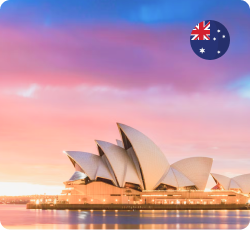In contrast to Indian institutions, Australian institutes provide 2 intakes whereas, Indian institutions offer only 1. India’s students prefer Australia to the United States as their second-favored overseas educational location. Australia is becoming more and more well-liked. According to the end-of-year foreign student enrollment data for 2009, 631,935 students from 217 various countries were registered in Australian universities. 120,913 among these students were Indian. Studying in Australia, there are two main intakes, as well as a summer intake:
| Intakes in Australia | Timelines |
| 1st Semester | Late February/early March to late May/early June |
| 2nd Semester | Late July/early August through to November |
| 3rd Semester | Late October / early November through to February |
Which Intake Should I Choose?
Choosing the intake for studying in Australia that is right for you may be a little complicated. When making a choice, take into account elements such as the program’s accessibility, academic performance, admission exam results, admission rates, employment prospects, and degree of program preparedness.
Whereas the majority of master’s courses have February or July intakes, certain specialized courses, such as those in healthcare and nursing, only have February intakes in Australia. Once more, several universities only offer a small number of degrees like IT and business in the November or summer intake.
Below is additional clarification for you if you are concerned regarding the best intake to pick in Australia. As we’ve already established, February is Australia’s main intake month, and nearly all universities provide the majority of their programs around this time. In case you somehow missed out on admittance in February, the Universities also offer courses in July.
There are other intakes in October and November, but very few colleges offer them and they are very rarer for the courses they offer. Some colleges also provide year-round submissions, which allow you to apply at whatever time of the year, but the choices are also available there.
Due dates vary depending on your degree and the university. If you would like further details, please contact your Overseas Education counselor– MSM Unify.
Your selection will be influenced by several factors, including your preferred university and course, past academic standing, test results, the acceptance rate of your preferred university, the application deadline, the start of the class, and your eligibility for the curriculum. Think about the following:
| Courses | What To Consider |
| Undergraduate Programs In Australia |
|
| Postgraduate Programs In Australia |
|
| Ph.D. In Australia |
|
| MBA In Australia |
|
Also Read : Best postgraduate courses in Australia
Deadlines
The deadlines for the two main intakes that Australian institutions follow are listed below as a basic guideline.
Indian students generally choose the July intake. However, the February intake, which is the first intake in Australia, is just as effective for some programs.
In situations where official outcomes are pending, Australian universities provide conditional admission. This clause can be useful to you because Indian colleges and universities typically declare their results around May or June. This enables you to begin the visa registration process without having to wait and spend time.
Intake for February
October through November in the prior year
Intake For August
April through May in the same year
The cutoff date for the November intake of minors
Intake For September
In Australian institutions, most master’s programs have three rounds of deadlines: Round 1, Round 2, and Round 3. There are typically two types of deadlines for master’s degrees.
- Deadline for Course applications
- Deadline for Scholarship applications
The scholarship deadline could arrive as soon as six months after the start of the course.
There are numerous deadlines for most business universities in Australia, such as Go8 institutions like the Australian National University, the University of Sydney, and the University of New South Wales. These trials include Early Decision, Round 1, Round 2, Round 3, Round 4, and occasionally Round 5 and Round 6.
Also read : Top 5 Business schools in Australia for Indian Students
Early Decision: Early August
- Round 1: Early August
- Round 2: Early October
- Round 3: Early November
- Round 4: Early February
- Round 5: Early April
- Round 6: Mid-June
These timeframes do, nevertheless, differ from college to college as to be anticipated. Carefully confirm your university’s unique admission requirements and timeframes. You must register for your intake as an overseas candidate no later than Round 4 to allow time for the visa application procedure.
Also read : 5 Tips for a Successful Australian Student Visa Application for Indian Students
Several of Australia’s leading educational institutions, such as the Group of 8, have early-bird deadlines for global candidates. These are those dates. Due to the obvious exceptional circumstances brought on by the CoViD-19 epidemic, you should routinely keep yourself informed about admission requirements and deadlines for the colleges of your choice.
A simple itinerary preparation guide for overseas applicants to Australian universities is provided here.
| Preparations | Semester 1 | Semester 2 | Semester 3 |
| Examine and select a few programs and institutions. | Ideally, at least 10 to 11 months before April to June, but as soon as possible | 10 to 11 months, preferably in September or October of the preceding year, before the start of the semester | 10 to 11 months before the start of the semester, roughly in November or December of the preceding year |
| Evaluate universities and submit an application | July to August of the previous year | November to December of the previous year | January to February of the applying year |
| Participate in the structured assessment | September to October of the previous year | December to February of the applying year | March to April of the applying year |
| start submitting college applications | October to November of the previous year | February to March of the applying year | May to June of the applying year |
| Interview and acceptance procedures | November to December of the previous year | March to April of the applying year | July to August of the applying year |
| Register for an Australian student visa Education Loan | December to January of the applying year | May to July of the applying year | September to October of the applying year |
| Start making travel arrangements | January to February of the applying year | June to July of the applying year | November to December of the applying year |
Find the College of Your Dreams
If you want to study abroad in Australia and are looking for an institution that ideally fits your description, above is compiled vital data about prestigious international universities and their intakes. You can be sure that this information will assist you in focusing your search for universities.
You may get up-to-date, reliable information from more than one thousand institutions about ratings, admission costs, typical tuition costs, cost of living, grants, and more. Additionally, you can look for universities by name, location, or by programs in popular specialties including physics, finance, management, linguistics and culture, biological sciences, agriculture, and computer and information technology, as well as marketing and media, and communication.
The application procedure in Australia is fairly efficient. To increase your chances of being accepted, all you have to do is decide when and how to commence your application as well as how and when you should submit it. The above details about all the intakes and the timelines will help you with your process of college applications. Read it thoroughly and get going!
You may also like:
Most affordable universities in Australia
What items should you bring to study in Australia
Factor in choosing what to study in Australia



























